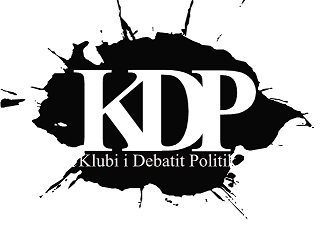Author: Sefer Selimi Jr.
Have you ever been influenced by propaganda? Have you been part of its creation and distribution? If you ask yourself these questions, the answer is maybe without your awareness but YES! In one form or another, we are all part of the creation and dissemination of propaganda while being surrounded on all sides by it, but the point is that the vast majority of people do not have the proper skills to notice this, and of course, a well-designed propaganda is meant not to be noticed as such. However, what is propaganda?
The form, structure and nature of its communication have evolved along with society and communication technology. Authors Bruce Lannes Smith and Harold Lasswell in 1946 define propaganda as “a means of encouraging a large number of people to act together” and Steven Luckert and Susan Bachrach in the book The Power of Nazi Propaganda write: “Propaganda is presented in various forms. It is strategic and deliberate to influence attitudes, opinions and behavior. Propaganda can be both beneficial and harmful. She can use truths, half-truths and lies. To be successful, it dives deeply into our values, fears, hopes and dreams. “
Social media like FaceBook, Twitter or YouTube have created the conditions for even ordinary individuals to create and distribute propaganda. All people are involved in the process of persuading others to achieve specific goals, and if you are active in socio-political life you have certainly communicated a message designed to reach a large number of people in support of your cause. However, propagandists do not intend to encourage discussion, reflection or encourage the creation of individual opinion by presenting more views, leaving you the opportunity to judge for yourself, which perspective is correct but propagandists use facts and selective information conveying only those ideas that are consistent and serve the purpose.
To distinguish propaganda, we need to know the forms of presentation and the techniques used to successfully influence people. The four most common techniques include:
- Activating strong emotions – Skillful propagandists recognize the fear, hope, disappointment, anger, and sympathy of the audience. They exploit emotions and prejudice to build a message that will provoke a strong reaction and stifle the possibility of critical thinking..
- Simplifying information and ideas – Propaganda, although it can use real, semi-true or false information to be successful, is a simple story that is acceptable and accessible to the audience. By simplifying the message, it is often possible to successfully create messages that are easy to remember and follow. Simplifying information is not intended to contribute to educating or increasing audience knowledge but to convince it.
- Adjusting the needs and values of the audience – Successful propagandists always target specific groups using their ethnic, religious, racial values as well as your desires and beliefs. You can be seduced as a family man or even through your famous hobby or famous idols.
- Attack on opponents – Propaganda can serve as a form of political and social struggle to identify and annihilate opponents. It can call into question the legitimacy, credibility, accuracy, and even character of opponents and their ideas. This war is based on the principle of creating “We against them”.
Governments, various political and social actors, businesses use propaganda to achieve their goals and fulfill their missions. To assess whether a propaganda is harmful or useful one must analyze its characteristics:
- Message: The nature of the information and the ideas presented
- Technique: Using rhetorical symbols and strategies that attract attention and activate the emotional response
- Environment and context: Where, when and how people perceive the message.
- Communication tools and format: How the message is given to people and what form it takes
- Audience response: How people think and feel about the message and how free they are to accept or reject it
In a time when social networks are a great source of information and disinformation campaigns are more present than ever, audiences need to be educated to be able to distinguish between fake news and propaganda as a means to influence public opinion. Although they differ in form, technique and manner of communication, misinformation and propaganda are very similar and complementary to each other to manipulate the audience so it is necessary to be able to distinguish propaganda and assess whether it is harmful or not.

